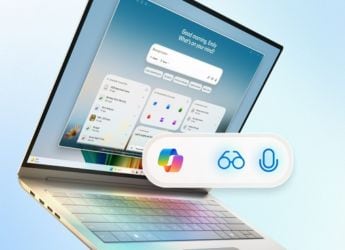- Home
- Transportation
- Transportation News
- Microsoft, Volkswagen Partner to Develop Connected Cars
Microsoft, Volkswagen Partner to Develop Connected Cars
In its bid to become a mobility provider with fully connected vehicle fleet, German automobile group Volkswagen has entered into a strategic partnership with Microsoft to leverage the US software giant's Cloud expertise.
As part of the partnership, the two companies will collaborate to develop the "Volkswagen Automotive Cloud", a dedicated platform for all future Volkswagen digital services and mobility offerings.
In the future, Volkswagen's fleet of cars will become mobile Internet of Things (IoT) hubs linked by Microsoft Azure, the German carmaker said in a statement this week.
"The strategic partnership with Microsoft will turbocharge our digital transformation," said Volkswagen CEO Herbert Diess.
Via the Volkswagen Automotive Cloud, the automobile group plans to optimise the interconnection of vehicle, Cloud-based platform and customer-centric services for all brands.
"Volkswagen is harnessing technology to digitally transform and deliver innovative new connected car services to its customers," said Satya Nadella, CEO of Microsoft.
"The world's leading companies run on Azure, and we are thrilled that Volkswagen has chosen Microsoft. Together we will reimagine the driving experience for people everywhere," Nadella said.
From 2020 onwards, more than five million new Volkswagen-brand vehicles per year will be fully connected and will be part of the IoT in the Cloud, Volkswagen said.
In the future, all in-car services for vehicles of the core Volkswagen brand as well as the Group-wide Cloud-based platform will be built on Microsoft's Azure cloud platform and services as well as Azure IoT Edge.
Volkswagen said it would also establish a new automotive Cloud development office in North America near Microsoft's headquarters.
Get your daily dose of tech news, reviews, and insights, in under 80 characters on Gadgets 360 Turbo. Connect with fellow tech lovers on our Forum. Follow us on X, Facebook, WhatsApp, Threads and Google News for instant updates. Catch all the action on our YouTube channel.
Related Stories
- Samsung Galaxy Unpacked 2025
- ChatGPT
- Redmi Note 14 Pro+
- iPhone 16
- Apple Vision Pro
- Oneplus 12
- OnePlus Nord CE 3 Lite 5G
- iPhone 13
- Xiaomi 14 Pro
- Oppo Find N3
- Tecno Spark Go (2023)
- Realme V30
- Best Phones Under 25000
- Samsung Galaxy S24 Series
- Cryptocurrency
- iQoo 12
- Samsung Galaxy S24 Ultra
- Giottus
- Samsung Galaxy Z Flip 5
- Apple 'Scary Fast'
- Housefull 5
- GoPro Hero 12 Black Review
- Invincible Season 2
- JioGlass
- HD Ready TV
- Laptop Under 50000
- Smartwatch Under 10000
- Latest Mobile Phones
- Compare Phones
- OPPO Reno 15 Pro
- OPPO Reno 15
- Vivo Y500 Pro
- Realme GT 8 Pro Aston Martin F1 Limited Edition
- Huawei Mate 70 Air
- Moto G57
- Moto G57 Power
- Motorola Edge 70
- Asus ProArt P16
- MacBook Pro 14-inch (M5, 2025)
- iQOO Pad 5e
- OPPO Pad 5
- Noise Diva 2
- Noise Halo 2
- Acerpure Nitro Z Series 100-inch QLED TV
- Samsung 43 Inch LED Ultra HD (4K) Smart TV (UA43UE81AFULXL)
- Asus ROG Ally
- Nintendo Switch Lite
- Haier 1.6 Ton 5 Star Inverter Split AC (HSU19G-MZAID5BN-INV)
- Haier 1.6 Ton 5 Star Inverter Split AC (HSU19G-MZAIM5BN-INV)

















